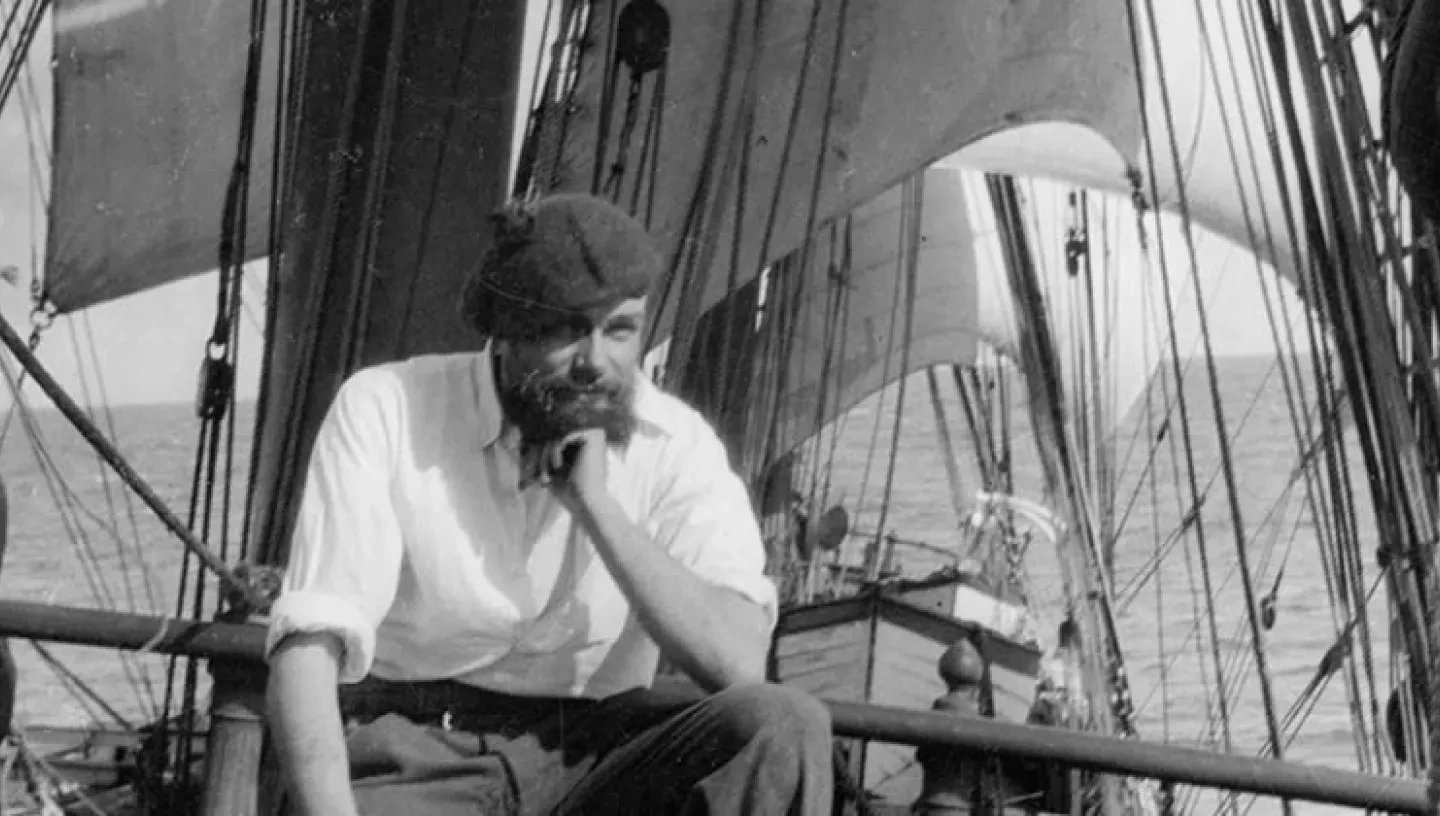
Alan Villiers was a distinguished sailor, author and photographer. His work vividly records the period of early 20th century maritime history.
Villiers's work vividly records the period of early 20th century maritime history when merchant sailing vessels or ‘tall ships’ were in rapid decline. He was appointed a Trustee of the National Maritime Museum in 1948 and co-founded the Museum's collection of historic photographs.
Villiers’s early days at sea
Villiers was born in Melbourne, Australia in 1903, and first went to sea at 15 as an apprentice on board the Rothesay Bay. This barque was one of the few sailing vessels that still traded there, operating in the Tasman Sea between Australia and New Zealand.
Villiers loved the life, learned quickly and was soon an 'able seaman', crewing on various sailing vessels until he had an accident on board the Lawhill – an old British four-masted barque. Temporarily injured and unable to work as a seaman, he became a journalist
Reporting on whaling in Antarctica
Before long, Villiers had the chance to go to sea again. When a Norwegian whaling fleet stopped in Hobart on their way to the Ross Sea, he seized the opportunity and joined them as a reporter on the first modern whaling expedition to Antarctica. He sent his stories back using the ship's radio and they were sold around the world. He later expanded them to produce his book Whaling in the Frozen South.
Falmouth for Orders
In 1927 Villiers secured passage to Falmouth on board the Herzogin Cecilie under Ruben de Cloux. The Herzogin had been challenged to a race by the Swedish barque Beatrice. De Cloux's vessel won the race in a passage that took 96 days. The book that Villiers wrote during the passage, Falmouth for Orders was a great success.
Tragedy on the Grace Harwar
After a few months in Europe, Villiers returned to Tasmania. He and his friend and fellow journalist, Ronald Walker, decided to make a documentary film to record the last of the great sailing ships. They signed on with the Grace Harwar, the last full-rigger in the Australian trade, and sailed for England. The voyage was harrowing. Walker was killed in an accident and the second mate had a breakdown as a result. Villiers none the less recorded the voyage on 6000 feet of film and later in his book By Way of Cape Horn.
Sons of Sinbad
In 1938 he began an examination of sailing culture in the Middle East and spent 18 months on board the Arab dhow The Triumph of Righteousness, sailing from Kuwait to Zanzibar and back. He recorded his experience in Sons of Sinbad. The project ended prematurely owing to the outbreak of the Second World War.
During the war, Villiers commanded landing ships and was awarded the Distinguished Service Cross. He married in 1940 and settled in Oxford. He continued to travel, write and enthuse about ships and the sea until his death in 1982.
The Alan Villiers collection at the National Maritime Museum
- The Alan Villiers collection has 20,000 negatives, which reflect the great variety of Villiers’s maritime endeavours. View the collection in our image archive.
- You can also buy a selection of Villiers’s prints in our online shop.
- The National Maritime Museum also holds over 150 cans of Villiers’s film – detailing voyages in sailing ships from the 1930s to the 1960s. Discover more about the film archive.